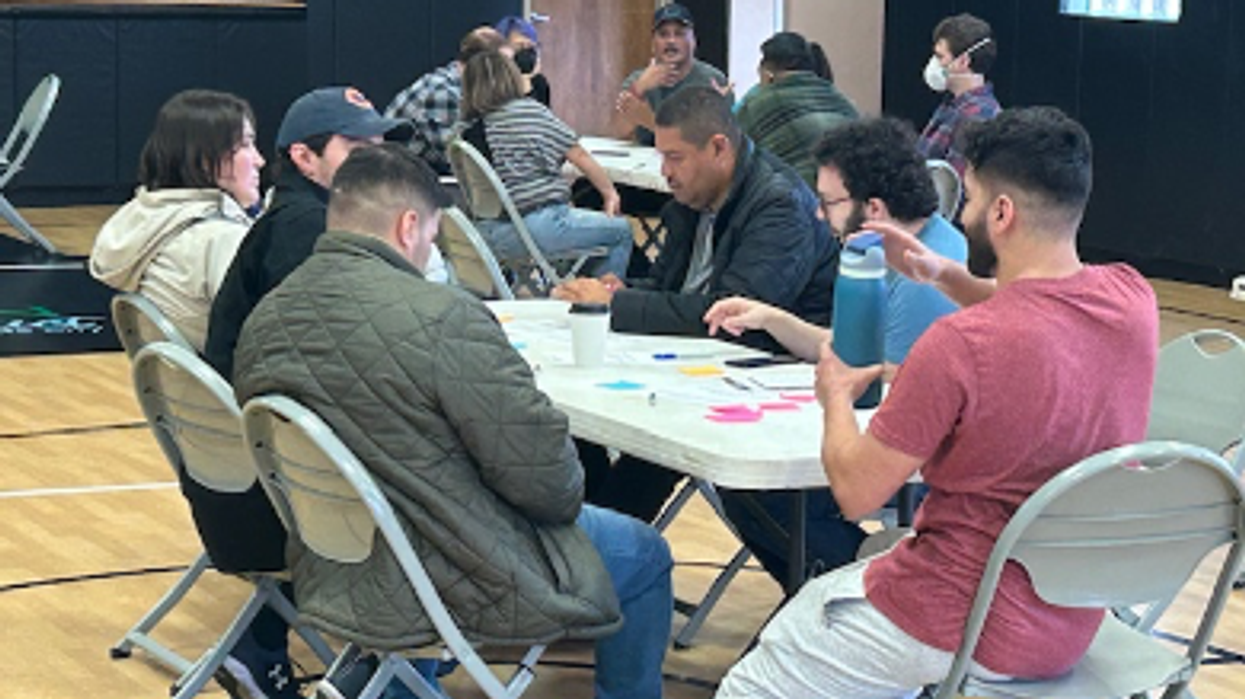News Ambassadors enlists college-aged journalists to help local newsrooms fill gaps in coverage of underreported communities with rigorously reported stories that uplift solutions and common ground – and are responsive to the needs of local community members themselves.

SUGGESTION: Berwyn Collaborative: Understanding Community Needs
Following their community survey and a community listening event, Krippner and Posada-Jaramillo put together a shareable Information Ecosystem Assessment report to share their findings, which can help inform reporting by newsroom partners and student reporting fellows in the News Ambassadors/Illinois Latino News cohort.
Berwyn is a Chicago suburb with a strong Latine population but little local news coverage. One of the reasons for this lack of coverage may be that other populations (particularly traditional Latine neighborhoods like Little Village or Pilsen) tend to take the coverage spotlight.
The community engagement findings in Berwyn revealed a desire for enhanced reporting on public safety, health, school, and taxes/government spending.
When Berwyn residents were asked to select their top three primary news interests in a local news survey, 66% included public safety, 33% included health, 30% included schools, and 40% included taxes and government spending.
Asked about their top three preferred methods of receiving news, 85% of respondents mentioned social media, 37% mentioned friends and family, and 35% mentioned television broadcasts.
Around 56.5% of respondents said they were either somewhat dissatisfied or dissatisfied with current local news coverage, while only about 19% said they were somewhat satisfied or satisfied. The remaining 24.5% said they were neutral.

“Quantitative and qualitative data is helping us better understand the needs of the Hispanic, Latino community in Berwyn and shaping the stories we produce – from pitching story ideas to stories being published,” said Hugo Balta, publisher of Illinois Latino News and executive editor of the Fulcrum.
Last November, Krippner and Posada-Jaramillo co-hosted a Berwyn community listening session with newsroom partners at Berwyn’s Liberty Cultural Center. The agenda? To give attendees a chance to speak with journalists and each other about the specific local concerns and stories they want to see covered in local news.
Attendees revealed a desire for more transparency from their local government and for journalists to shine a light on how public policy decisions are made. Their concerns will help to inform reporters’ Solutions Journalism stories this spring. While some concerns were raised, attendees also pointed out that grassroots efforts like the organizing of green spaces, community-based farming practices, and gardening/nutritional education were becoming more prominent and that those efforts deserved news coverage as well.
“Politics isn’t everything for the Berwyn community,” said one survey respondent. “Many are taking action to help their neighbors and to create the neighborhood they wish to have. This isn’t a ‘wait and see what happens’ community.”
This cohort of journalists will pursue engagement stories this spring through the lens of Solutions Journalism. Solutions Journalism often focuses on pointing out specific challenges or injustices within a particular community and covering ongoing efforts to address those challenges or injustices.
This past fall, Krippner and Posada-Jaramillo trained in Solutions Journalism strategies with News Ambassadors. In early 2025, they were joined by Mariana Bermudez, and Britton Struthers in order to enlist in Solutions Journalism strategies in the Berwyn community. The Chicago cohort is also working alongside a cohort in Prairie View, Texas who are engaging in their community with the same solutions-based reporting strategies.
The idea of Solutions Journalism is that how people respond to problems is newsworthy and deserves attention, too. “Too often, news coverage focuses on problems without mentioning how people can respond or be resilient in the face of those challenges,” said director of News Ambassadors, Shia Levitt. Solutions Journalism is rigorous, evidence-based reporting in response to social problems. “When done well, Solutions Journalism can bring local communities tools they can use to address wide-facing local problems.”
Stories from this cohort of journalists will be published later this spring in audio, video, or written form.
To read the Berwyn Information Ecosystem Assessment, click HERE.
Editor’s Notes: News Ambassadors is funded in part by the Bridge Alliance Education Fund (BAEF). BAEF also sponsors the Fulcrum. Hugo Balta is the executive editor of the Fulcrum and a board member of the Bridge Alliance Education Fund. He is the publisher of the Latino News Network and a trainer with the Solutions Journalism Network. The articles produced by the Chicago cohort will selectively be published on Illinois Latino News, Latino News Network, and the Fulcrum.




















